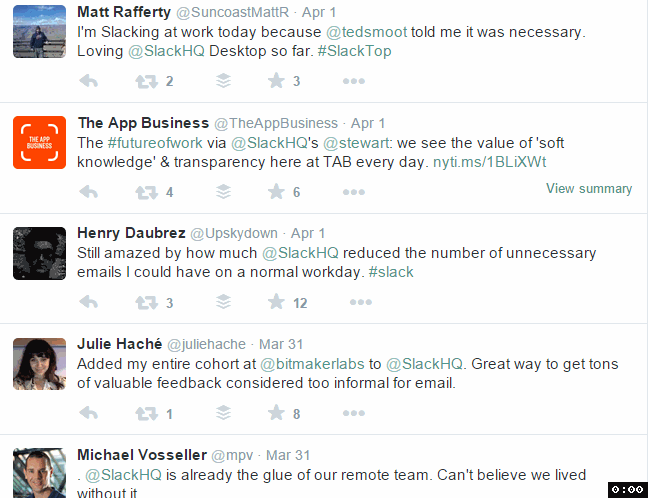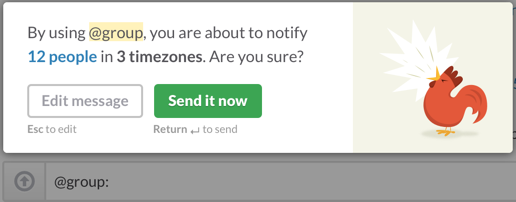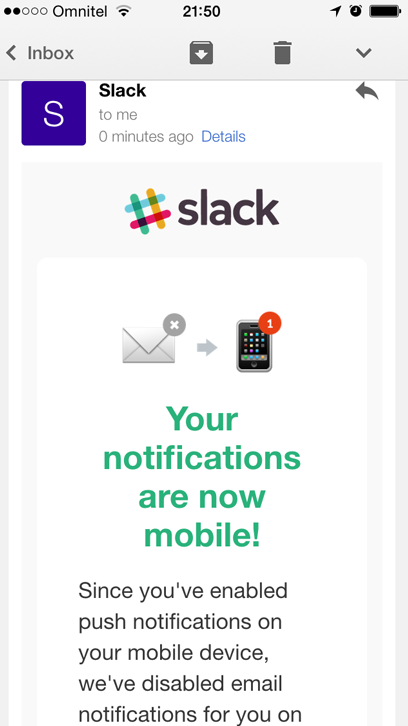What do you make of a product that has over 500,000+ daily users and was able to achieve this feat after a year of their product launch? Tremendous right? In a time when startup ideas are sprouting each day, it’s hard to miss the ones that have shaped well and are disrupting growth, in their own unique manner. Slack is one such product story that needs no introduction, which is evident in the manner in which small and big teams are picking it as their favorite amongst the ‘team collaboration’ tool category.
Slack’s growth is not another run of the mill story, in fact, their growth encompasses various finer elements such as exceptional product strategy, understanding customer feedback and of course growth hacking that has made it worth a second glance!
Product Strategy- A Potent Mix Of Features And Experience
As users, we are insatiable and demand quite a bit from each product offering that hits the market. Smart product developers understand that an excellent product strategy today has to be a potent mix of features and experience to be able to “trap” users. Slack has been able to justify itself on both these counts.
-
The Friendly Features
What “extra” can Slack offer us? This is a pertinent question in the minds of most users today. Moving from the comfort of one product to another isn’t simple, but being a part of three Slack teams, I can say with authority that it does offer features that may not be explored by others. For example, Slack pop-ups the links that are shared which includes title and images (if any) making it hard to miss them during lengthy team conversations. The chat rooms can be easily bifurcated and can help team-mates to raise a topic in the desired channels, without disrupting the normal flow of conversation.
Grabbing attention of each teammate may not be easy within larger teams. A simple @everyone followed by a message is what it takes to do it swiftly! The best part of Slack is its ability to integrate with major services of your choice including Dropbox, Asana and many more.
Another interesting feature that Slack offers are the Slackbots, which are “built in robots” that can be used to create notepad and file repository, share automatic responses and provide a convenient product walk through. This is Slackbot in action
Image Source: www.venturebeat.com
The USP Of Slack- Experience
One of the obvious reasons that have led to the growth of Slack is the fact that these folks haven’t lost or compromised on the human touch in their journey towards growth. It still feels that this company truly believes in ‘for the people and by the people’ motto. This aspect is quite evident in their design interface and the user on boarding process, which is both electric and playful.
Andrew Wilkinson, the force behind the design of Slack, says in his (famous) post that
“I felt the problem had already been solved. It was a crowded market and knew it would be difficult to make his product stand out from the crowd”.
However in this post he goes on to explain the three essential elements behind Slack’s massive popularity. According to him these are- the way it sounds, the way it looks and the way it feels different from its competitors. All of this is focused towards creating an experience for the users. Unlike other communications product that we have used in recent times (HipChat etc.) Slack provides a platform that resembles “a teammate” with an awesome sense of humor!
As a Slack user, there isn’t a moment when this product hasn’t surprised me. Here’s a teaser >
I agree with Andrew here, when he says that-
“ With Slack, a bubbly, bright UI, delightful interactions, and hilarious copy-writing come together to create a personality. A personality which has triggered something powerful in its users: they care about it. They want to share it with others”.
Takeaway: While Slack has set a benchmark of sorts, the key takeaway here for others is to focus on creating a personality for their product. Slack may not provide any additional features to its users (in comparison to its competitors) but it undoubtedly provides an experience that lingers with each login, thereby ensuring faster growth.
Investing In Understanding Customer Feedback
The early users of Slack were limited, and the feedback came entirely from friends (with teams) according to its founder Stewart Butterfield. In an exclusive interview shared on Firstound, Butterfield states that they got valuable feedback after running Slack with small groups and realized that they had a long way ahead and had to invest more time in making the product better. Adding the description field was one such change.
The Slack that we see today has emerged after numerous rounds of trial and error coupled with valuable customer feedback. The team at Slack receives over 8,000 Zendesk tickets and over 10,000 tweets, and they respond to all of them!
According to Butterfield “Whatever form it takes, incoming user feedback must be processed, stored and studied. We’re pretty fastidious about tagging all of these incoming messages, collating and entering and retaining the data that people are sending us.”
This strategy has not only enriched user experience but has also propelled Slack’s growth many-fold. A lot of people may debate that Slack was ‘at the right place at the right time’ and that’s the reason behind its monumental growth. But the truth is that the same platform was available to its competitors as well.
Takeaway: When it comes to growth, it is always prudent to validate the product with your customers first. Many tech-startups have failed solely, for this reason, which is ignoring the requirements and inputs of its users. Creating a product that lives up to the expectations of an end user will ensure that half the battle is already won.
The Growth Hacking Approach
The overall approach at Slack reeks of growth hacking and has been twined beautifully both within and outside the product. But what sets them apart is the difference in their approach. As Hiten Shah of Kissmetrics puts it beautifully
“A company, that comes to mind that you might not think of as doing growth hacking would be Slack. It’s growing really fast, it’s an enterprise company, and they’ve made a lot of smart engineering decisions around their product that makes it easy to market.”
Recommended Read: 731 Slack Users Reveal Why It’s So Addictive
However, there are three major tactics that stand out when we talk about the growth hacking approach of Slack>
Focused Approach On Sign-Up
Slack is a ‘team’ communication tool, and it was important for the company to ensure that teams can quickly integrate with the tool. The ‘call to action’ buttons have been placed at strategic points and the sign-up process is simple in execution. Unlike other products that require a password (with numerous guidelines), Slack offers to send a link to users at a later stage, thereby saving valuable time during the sign-up process.
Apart from this, there are numerous other worthy hacks. For example, if you have a team that is spread across the globe and you wish to send a ‘@group’ message, it pop-ups the following message. Considerate right?
Image Source: http://littlebigdetails.com/
Mobile User Onboarding
Slack is one of those tools that has ensured that users can start from wherever they have left, and therefore they have invested heavily into what they’ve termed ‘leave state synchronization. According to Butterfield
“One of the things that drove us nuts about every other internal platform was that it was very difficult to pick up in the same place when you switched devices — say, when you left your laptop and picked something back up on your phone”.
Here’s an example of growth hacks that users can experience during their mobile onboarding process
Image Source:http://littlebigdetails.com/
Growth Hacking Branding
Though the element of ‘branding’ is more skewered towards ‘marketing’ bit of growth hacking, it is still a critical component being considered in Slack’s overall growth. Anyone who has used Slack would agree with the fact that it is Slack’s smart brand experience that adds value to its otherwise generic offering.
In an interview, Anna Pickard, the Editorial Director of Slack states that
“The way that we’ve built it, the way we’ve worked on building a friendly community around it, making sure we’re treating people with respect, empathy and courtesy all the way through: it’s all those things that make Slack feel like a member of the team, not just a piece of software supporting your team. We want people to like using Slack, and to want to share the experience. We want people to understand what they’re using, and never stop learning about it. The tone of editorial copy that surrounds and is woven through Slack is, for us, a vital part of supporting the product and the mission of the team behind it.”
She further states that “There’s a sense of recognition, the same simple, straightforward language that helps you in the onboarding process is the one that carries you through every interaction. It is sometimes funny, sometimes serious, sometimes just plain and informative, but throughout, it should feel like nothing more than a person, talking to another person”. This approach has triggered massive word-of-mouth publicity followed by magnanimous growth for Slack.
Takeaway: A well-thought product coupled with a growth hacking approach is a clear winner in the eyes of the user. However, it is essential to strategize this approach right at the beginning. For example, a referral marketing growth hack may work for a few brands or products, but may not be the right fit for another. It is therefore, important to invest in evaluating the product thoroughly before devising any growth hacks.
The Final Thoughts
More and more start-ups are working towards striking the right chord with their users, and it is hard to miss Slack’s growth. While Slack’s approach is quite well composed, the takeaways as mentioned above can be incorporated into any start-up story. The idea will be successful only when these tips are used as an inspiration and not as a prescription. Coming to think of it, we don’t sight a Dropbox, Airbnb or Hotmail growth hack every day. Do we?
What do you think of Slack’s growth and which part of their growth story resonates the most with you? Do let us know in the comments below!








Pingback: How to engage your app’s community on social media()
Pingback: xvoda | How to engage your app’s community on social media()
Pingback: How to engage your app’s community on social media | KnowNaija()
Pingback: How to engage your app’s community on social media | Bobbie Hollowell Blog()
Pingback: How to engage your app’s community on social media | SafetyFist.com()
Pingback: How to engage your app’s community on social media | BawlBuster()
Pingback: Marketingpi » How to engage your app’s community on social media()
Pingback: How to engage your app’s community on social media – Column Catcher()
Pingback: How to engage your app’s community on social media | Digital Marketing Blog - Algomizers()
Pingback: How to engage your app’s community on social media | 47st.Photo Blog, Brooklyn NY()
Pingback: How to engage your app’s community on social media | Sanguine Laginchey()
Pingback: How to engage your app’s community on social media - Akbaar()
Pingback: How to engage your app’s community on social media – Ask Marketing Expert()
Pingback: How to engage your app’s community on social media | Digital Gadget dan Selular()
Pingback: 9 Expert Tricks To Make Your App Referral Campaigns Deliver Better - App Virality()